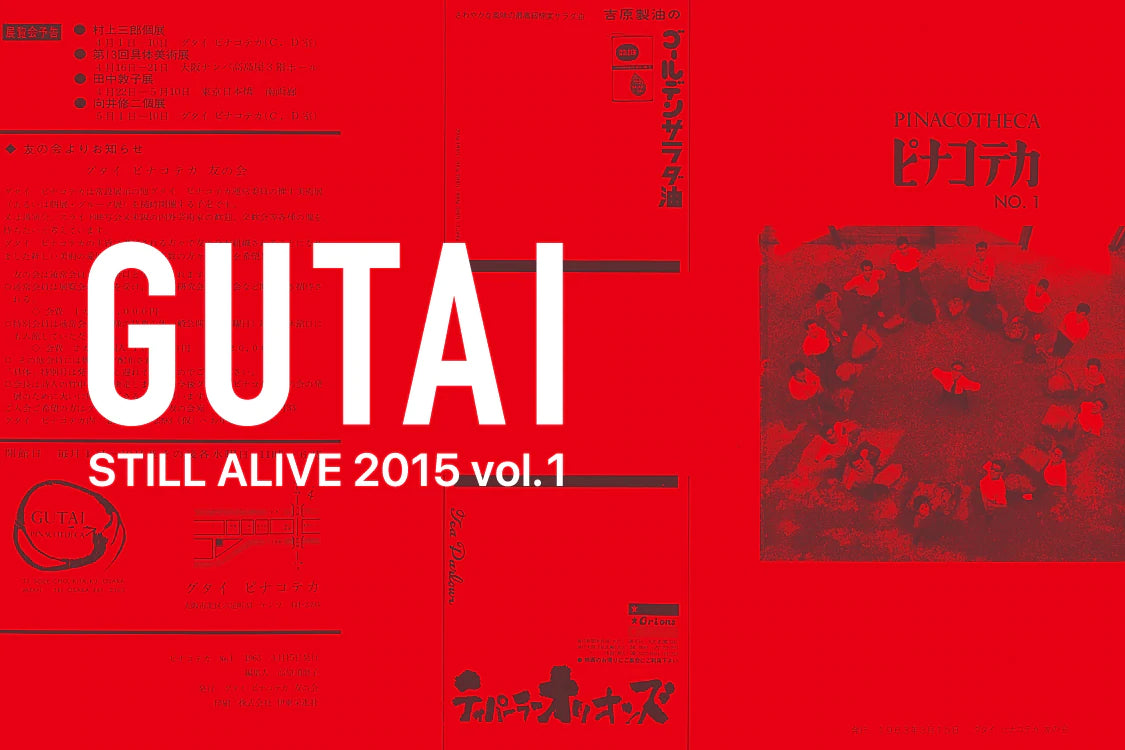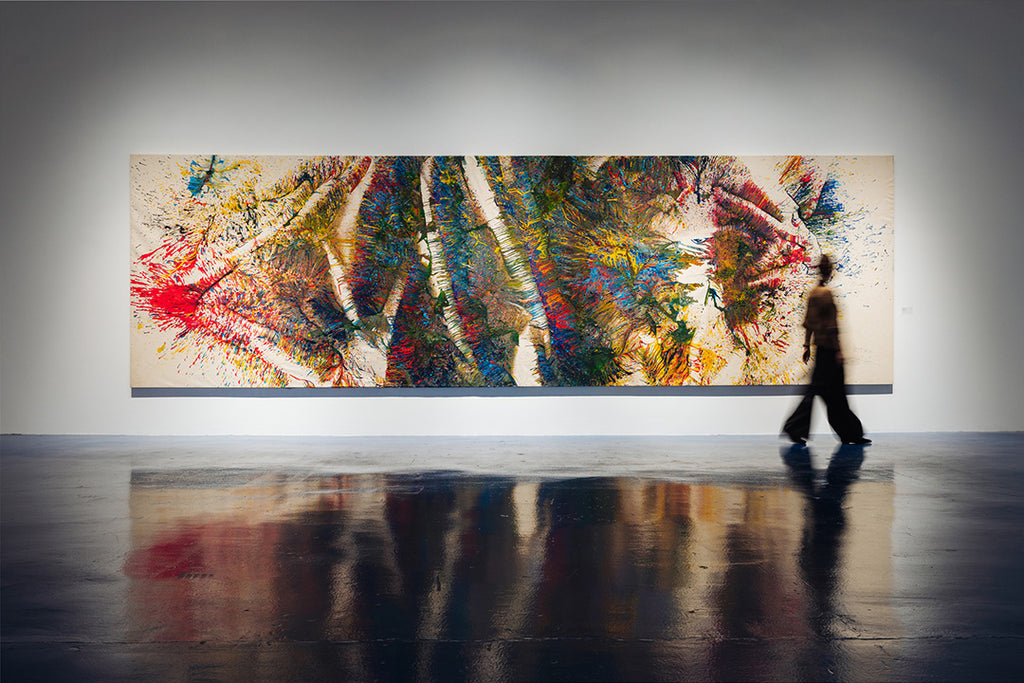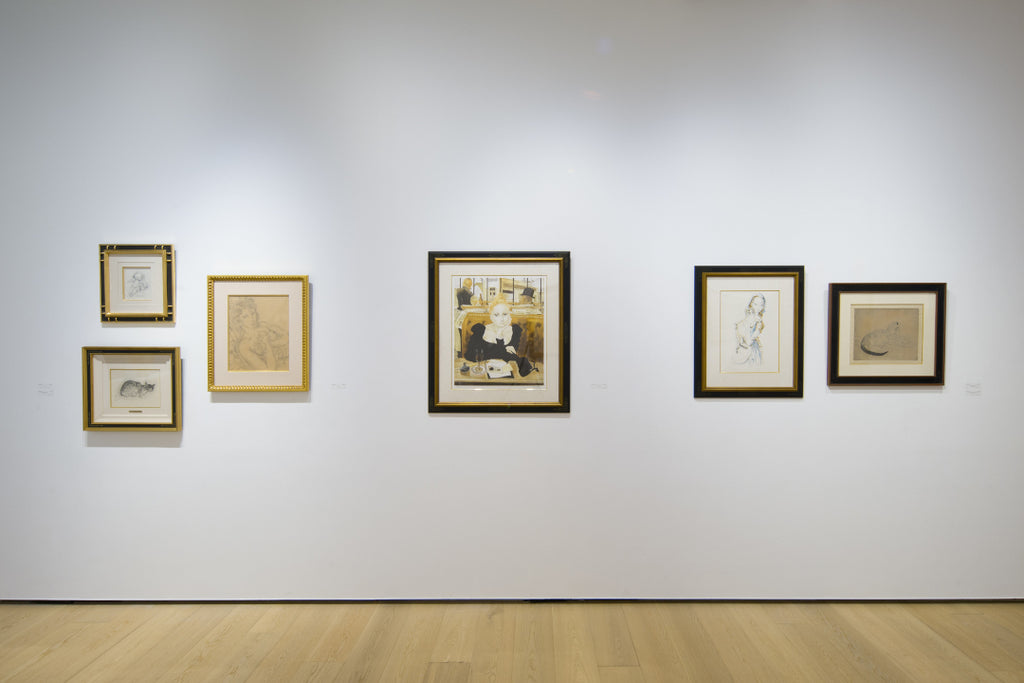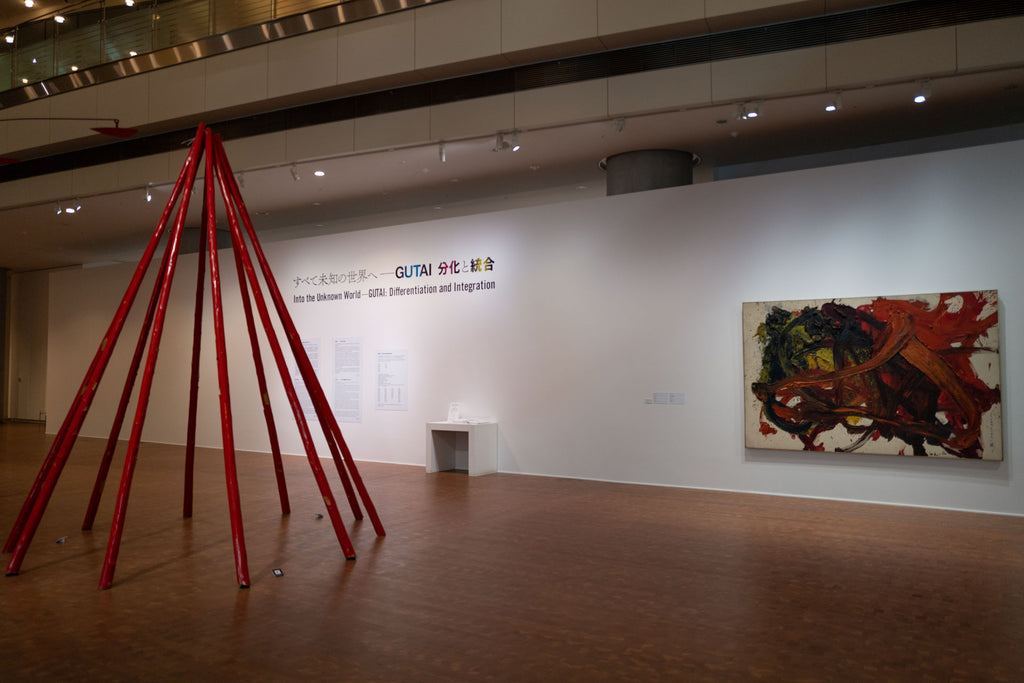ARTICLES
村上三郎 有一种能在一瞬之间便惊艳成立的“美”
GUTAI STILL ALIVE 2015 vol.1
23/35

本系列企划为您推出关于具体美术协会的书籍《GUTAI STILL ALIVE 2015 vol.1》的数字档案。第23期聚焦具体核心成员、因俗称“破纸而出”而知名的村上三郎。我们请山本淳夫先生进行了介绍,他曾经与村山三郎有过交往,职业生涯的起点是收藏了许多“具体”作品的芦屋市立美术博物馆的策展人。
村上三郎 有一种能在一瞬之间便惊艳成立的“美”
山本淳夫(横尾忠则现代美术馆策展处长)
当初被上司带着初次见到村上先生的那一刻,至今仍然记忆犹新。当时听说他在具体美术协会里属于首屈一指的"哲学家"和"理论派",因此刚刚成为策展人的我感到相当紧张。但实际上的村上先生是一位待人亲切、温文尔雅的人士,甚至让我感到意外。他面带和蔼可亲的微笑,会让人立刻放下戒心,感到轻松自在。他问我:“山本先生,您是学什么专业的?”我坦白地回答说:“我本科是学美术史的,但实际上我经常逃学,非常不好意思,其实并不太懂绘画,所以我打算从头学起。”没想到村上先生的回答出乎意料。他说:“那太好了!能完全不带先入之见地看待事物是一件非常好的事情。”尽管现在想来,那是一番非常深奥的话,但当时我只是单纯地因此而感到轻松。也许正是托了这个误解之福,我才能够一直把工作坚持到今天。
在具体派的回顾展(1933年,东京,彭罗斯研究所)的开幕宴会上,村上先生曾对我说:“对了,以后别再叫我‘村上老师’了,叫我‘村上先生’就行。”这也让我难以忘怀。具体的艺术家们各个都具有鲜明的个性,因此有时会相互发生冲突,但在主要成员中,村上先生是一个让人另眼看待的罕见存在。我认为这与他能够在没有任何夹杂物(包括头衔和年龄)的情况下,以纯度极高的眼光审视事物不无关系。
但是,就是这样的村上先生也有让我感到无法接近的冷漠瞬间。而且这还是他要求我以普通称呼对待他的一小时之前的事情。作为开幕典礼的一部分,村上先生在美术馆正门入口处制作了《入口》。这一作品的首次展示可以回溯到第一届具体美术展(东京小原会館,1955年)。他用牛皮纸堵住了展示室的整个入口,然后用全身将其冲破,这可以说是现在称之为“装置艺术”和“表演艺术”的先驱作品。入口被堵住的这个展室成为一个共鸣箱,空间本身变成了一件巨大的打击乐器。这种“声音”的震撼力是从记录照片上无法想象的。
当时太阳已经下山。伴随着令人震惊的炸裂声,从纸张裂缝中漏出的光线美不胜收。被这一场景感动的我跑上前去想跟村上先生打个招呼,但出乎意料的是,村上先生只用斜眼狠狠地瞪了我一下,一句话都没有搭理。虽然他事后曾解释说“表演之后,我总是没有心情说话”,但当时我完全不知究竟是怎么回事,感到特别困惑,以为自己是不是做了什么冒犯他的事情。
《入口》的魅力在于它产生了一种在行为之前和之后世界犹如瞬间发生了巨大变化的感觉。村上先生伴随着巨大的声响,仿佛一瞬之间就移动到了另一个完全相异的空间,并使两个空间合为一体。也许那一刻的村上先生就像小鸡破壳而出一样,刚刚完成了“脱胎换骨”。
虽然难以准确形容,但我觉得对于村上先生来说,艺术作品似乎与某种类似“飞跃”的东西之间只有一纸之隔。例如,他对于嶋本昭三先生的作品《请在这上面行走》的评论就相当独特。他指着远远高于头顶的地方说:“这件作品到底厉害在哪里呢?物体虽然就在眼前,但本质却在那个地方。”尽管勤奋努力难能可贵,但不同于此的是,有一种能瞬间成立且惊艳的“美”。村上先生的审美意识与某种类似绅士风度的东西息息相通。
虽然我也想谈论一下村上先生在具体时代的绘画,但可惜篇幅有限。从“具体”解散前后开始到70年代,村上先生积极地举办了一系列引人入胜的个展。其中最受瞩目的作品是《无言》(无减社,大阪,1973年)。尽管它属于“一句话都不说就是作品”的极端例子,但当时的作品似乎也全部都放弃了传统意义上的表达方式。此后自80年代以来,村上先生就再也没有举办过个展。
如果是通常情况下,这可能完全会被视为淡出。一生的盟友元永定正先生曾用其独特的话语对村上先生的才能感到惋惜地说:“三郎一直在想十分有趣的事情,所以我反复叮嘱他要把自己的想法写成书,可他就是什么都不做。真是一个村上‘懒三郎’啊!” 但是,村上先生达到的那个境界决不仅仅是单纯的退隐。要理解这一点,我强烈推荐各位阅读《苦精2滴半——村上三郎如是说》(溪流出版社,2012年)。这本书是坂出达典先生整理记录下来的村上语录,他是晚年的村上先生经常光顾的酒吧“变形” 的店主,书中生动地介绍了村上先生希望彻底摆脱所有的美术体系化,实现自由的人生状态。此书对我而言简直就是一本《圣经》般的宝典。
村上先生的生涯最终以三个主要的破纸而出作品而完结。这三件作品是前文提到的《入口》(1955年)、穿过21张牛皮纸板的《通过》(1956年)、以及突破柔软的薄叶纸冲出户外的《出口》(1994年)。本来他还计划在1996年芦屋市立美术博物馆举办的个展(笔者担任策展人)中进行更多表演,但却在开幕的三个月前不幸离世,让人猝不及防。许多人都不由得感到这位艺术家的“不在人世”正是他的最后一幅作品。
(刊登于《画廊月刊》2014年7月号)
*本文中的信息为发布时的信息。
ARTIST
RELATED ARTICLES
-

First Chapter: What Is Contemporary Art, and How Does It Deepen Our Way of Looking at Art?
2025.12.15
FEATURE -

行动绘画的真相 | 嶋本・白发的精神与国际声誉
2023.08.31
访谈 -

于香港探寻巴黎画派画家藤田嗣治的杰作
2023.02.10 香港
ART NEWS -

50 Years Since the End | The Gutai Art Association as seen at the National Museum of Art, Osaka
January 4, 2023
ART NEWS



